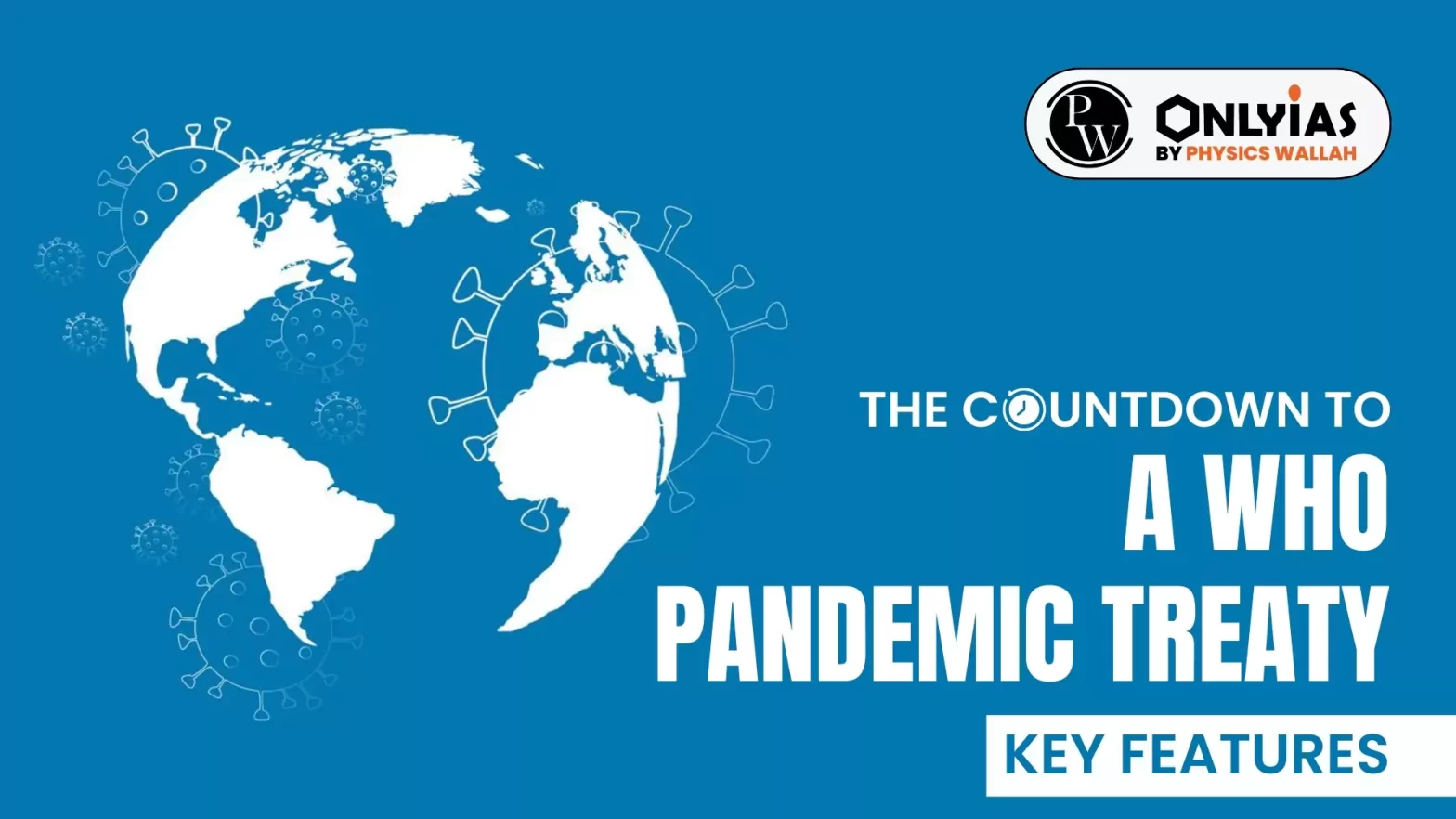Context
The ninth session of the Intergovernmental Negotiating Body (INB), marking the concluding phase of discussions for the World Health Organization Pandemic Agreement, began recently.
WHO Pandemic Treaty: WHO Member States Agree to Resume Negotiations Aimed at Finalizing the World’s First Pandemic Agreement
- Background of WHO Pandemic Treaty: In March 2021, an extraordinary call for a pandemic treaty was issued by 25 heads of government and international agencies, marking a pivotal moment in global health governance.
The key features of WHO Pandemic Treaty
-
Establishment of the COP:
- The current negotiating texts have also proposed an establishment of the Conference of Parties (COP) to oversee the implementation of the WHO Pandemic Agreement.
-
International Treaty:
- The proposed establishment of a COP suggests that an agreement could be a classic international treaty adopted under Article 19 of the WHO Constitution as opposed to the alternative Article 21 opt-out regulations.
-
Pathogen Access and Benefit-Sharing (PABS):
- To address this issue, the current draft of the Agreement proposes a quid pro quo mechanism, formally titled the WHO PABS System.
- It compels countries to share genome sequence information and samples with WHO-coordinated networks and databases.
- In return for access to this data, manufacturers will be required to provide 10% of their products free of charge and 10% at not-for-profit prices.
-
Legal Obligations on Benefits-Sharing:
-
- The current text of the provision aims to establish legal obligations on benefits-sharing for all users of biological materials and genetic sequence data under PABS.
- A robust PABS system, particularly for low- and middle- income countries, including some African nations, seems non-negotiable for promoting equity in access to medical countermeasures.
Concerns with the Treaty
- Access and benefit sharing: Many developed countries and the pharmaceutical industry are not satisfied with access and benefit sharing in the current negotiating text, including the perceived trade-offs.
- Hesitancy to Share information: The agreement involves the establishment of a global system for sharing pathogens and their genetic codes but developing countries are hesitant to share information on pathogen spread and evolution if they perceive little in return, a situation exacerbated during the COVID-19 pandemic by vaccine nationalism.
- Enforcement Mechanisms: The effectiveness of the Agreement could be compromised in the absence of a strong enforcement mechanism.
- Limitations of International Health Regulations: The existing International Health Regulations are already legally binding. However, they failed to prevent unjust travel or trade restrictions, and hoarding of vaccines and other medical countermeasures during the COVID-19 pandemic.
Conclusion
The WHO Pandemic treaty/ agreement represents a critical step towards rebuilding trust and coordination between nations, acknowledging that no single Government or institution can confront the threat of future pandemics in isolation.
Also Read: India TB Report 2024
| Prelims PYQ (2021):
With reference to recent developments regarding ‘Recombinant Vector Vaccine’, consider the following statements:
1. Genetic engineering is applied in the development of these vaccines.
2. Bacteria and viruses are used as vectors.
Which of the statements given above is/are correct?
(a) 1 only
(b) 2 only
(c) Both 1 and 2
(d) Neither 1 nor 2
Ans: (c) |
![]() 29 Mar 2024
29 Mar 2024

